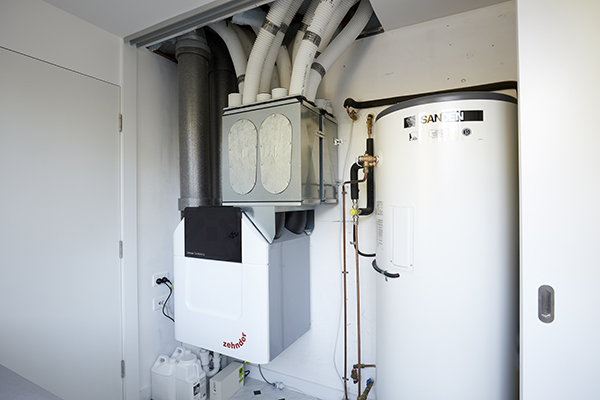Financial Benefits of HRV for Homeowners
Wiki Article
The All-Inclusive Guide to the Uses of Heat Recovery Ventilation in Modern Buildings
Heat Recovery Ventilation (HRV) systems stand for a significant innovation in developing technology (HRV Heat Recovery Ventilation). They supply a technique for trading stagnant interior air with fresh outdoor air while minimizing energy loss. This technique not just improves indoor air high quality however likewise adds to energy performance in both household and industrial structures. Understanding the numerous applications and benefits of HRV can reveal its critical role in contemporary layout and sustainability efforts. The implications of this technology deserve discovering additionallyRecognizing Heat Recovery Ventilation Equipments

Numerous modern-day buildings prioritize energy performance, understanding warm healing ventilation (HRV) systems is vital for enhancing interior air high quality and reducing energy usage. HRV systems function by moving heat from stale indoor air to incoming fresh air, properly maintaining comfy interior temperatures while reducing power loss. These systems include a heat exchanger, fans, and ductwork that promote the circulation of air. Throughout winter season, HRV systems catch and reuse warm from the outward bound air, while in summer, they can assist cool incoming air. By continuously exchanging air, HRV systems also reduce moisture and the focus of interior contaminants. Appropriate setup and maintenance of HRV systems are necessary for their performance and effectiveness in improving overall building performance and convenience.
Advantages of Heat Recovery Ventilation
Heat recovery ventilation systems provide various benefits that boost both energy efficiency and interior air high quality in modern-day buildings. By recording and reusing power from exhaust air, these systems greatly minimize cooling and heating prices, resulting in lower energy consumption. They keep a stable circulation of fresh outside air, minimizing the danger of interior air pollutants and irritants. This continuous exchange aids control moisture levels, protecting against mold growth and guaranteeing a much healthier living environment. In addition, HRV systems contribute to sustainability objectives by decreasing total carbon footprints. Their ability to enhance ventilation without giving up thermal comfort makes them a useful addition to contemporary structure design, promoting both economic and ecological advantages.Applications of HRV in Residential Buildings
As house owners significantly prioritize power efficiency and indoor air top quality, the applications of warmth recovery air flow (HRV) systems in residential structures have actually ended up being a lot more common. HRV systems are particularly advantageous in Recommended Site tightly sealed homes, where keeping fresh air circulation is crucial for avoiding wetness build-up and interior toxins. They successfully move warm from outbound stagnant air to incoming fresh air, decreasing power prices associated with heating & cooling. In addition, HRVs can enhance comfort levels by managing humidity and temperature. They are also adaptable for various domestic styles, consisting of single-family homes and multi-unit buildings. Overall, integrating HRV systems sustains sustainable living techniques while ensuring a healthier interior atmosphere for occupants.HRV in Industrial and Industrial Setups
In business and industrial settings, the execution of heat healing air flow (HRV) systems has come to be progressively critical for optimizing energy efficiency and keeping air top quality. These systems successfully transfer warm from exhaust air to incoming fresh air, decreasing the requirement for added home heating or air conditioning. This not only lowers power prices yet additionally adds to sustainability efforts. Industries such as manufacturing, warehousing, and office buildings profit significantly from HRV systems, as they help control temperature and moisture levels, ensuring a comfy and efficient environment. In addition, HRV systems help in getting rid of pollutants and excess moisture, boosting indoor air top quality. As regulations around air top quality come to be stricter, the fostering of HRV innovation is most likely to grow, making it a vital part of modern business and commercial framework.Future Fads in Heat Recovery Ventilation Technology

Often Asked Questions
Just How Does Heat Recovery Ventilation Impact Indoor Air Top Quality?
Heat recovery ventilation significantly improves interior air high quality by continually trading stale indoor air with fresh outside air while recuperating energy. This process decreases contaminants, keeps optimal humidity degrees, and assures a healthier atmosphere for occupants.Can HRV Systems Be Mounted in Existing Buildings?
HRV systems can undoubtedly be installed in existing buildings. Retrofitting may call for alterations to ductwork and air flow formats, but it significantly improves energy performance and interior air quality, making it a viable alternative for older frameworks.What Upkeep Is Required for HRV Solutions?

Exist Details Climates Where HRV Is A Lot More Effective?
Heat recovery ventilation systems are particularly reliable in climates with substantial temperature level differences in between seasons. These systems maximize energy efficiency by recouping warmth from exhaust air, making them perfect for both cold and reasonably warm atmospheres.Exactly How Do HRV Systems Affect Power Costs?

Report this wiki page